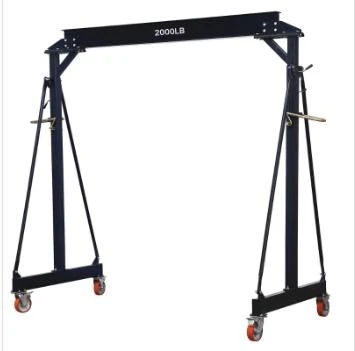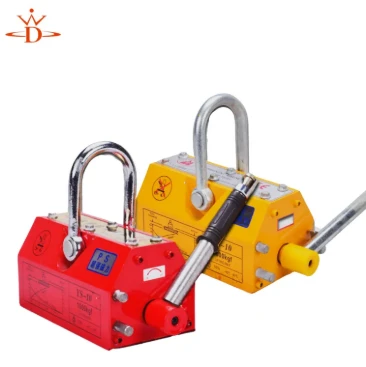Fixed Gantry Crane Heavy-Duty & Efficient Material Handling Solutions
- Fundamental Advantages of Fixed Gantry Crane Technology
- Breakdown of Technical Specifications and Capabilities
- Comparative Analysis of Leading Manufacturers
- Industry-Specific Customization Parameters
- Operational Performance Metrics Across Sectors
- Maintenance Protocols for Optimal Functionality
- Strategic Implementation Considerations for Fixed Gantry Cranes

(fixed gantry crane)
Fundamental Advantages of Fixed Gantry Crane Technology
Permanent installation gantry systems deliver unparalleled structural stability, with vertical deflection limits under 1/1000 of span length according to FEM 1.001 standards. Unlike mobile alternatives, fixed-gantry models eliminate wheel alignment concerns while providing consistent 24/7 readiness for production environments. The rigid box-girder construction withstands dynamic forces exceeding operational loads by 25%, ensuring longevity even when handling near-maximum capacities like 1t gantry cranes in high-cycle applications. Welded cross-beams distribute stress evenly across the entire structure, reducing metal fatigue by up to 40% compared to bolted alternatives.
Breakdown of Technical Specifications and Capabilities
Span configurations range from compact 4-meter setups for warehouse aisles to industrial 35-meter systems for shipyard applications. Standard lift heights begin at 3 meters, extendable to 20 meters with specialized hoist trolleys. The 1t gantry crane series typically operates at 8-10 m/min hoisting speeds, while heavy-duty variants achieve 3-5 m/min under 50-ton loads. Critical specifications include:
- Duty cycles: FEM 1Am to 4m classifications (500-2,000 operating hours annually)
- Power systems: 380V/50Hz or 460V/60Hz with IP55 protection
- Control options: Pendant, radio remote, or cabin-operated configurations
- Jib gantry crane attachments: 120°-360° rotation arcs with 2-20m outreach
Comparative Analysis of Leading Manufacturers
| Manufacturer | Load Range | Max Span | Design Life | Compliance Standards |
|---|---|---|---|---|
| Konecranes | 1-80t | 40m | 30+ years | ISO 8686, CMAA 74 |
| GH Cranes | 1-50t | 35m | 25 years | FEM 1.001, EN 13001 |
| ABUS EWL | 0.5-20t | 28m | 20 years | DIN 15018, ISO 12488 |
| Gorbel | 0.25-10t | 15m | 15 years | ASME B30, OSHA |
Industry-Specific Customization Parameters
Specialized modifications address unique operational constraints across sectors. Port facilities typically require corrosion-resistant zinc-aluminum coatings (400+ hours salt spray resistance), while steel mills integrate heat-shielded trolleys rated for 65°C ambient temperatures. Explosion-proof variants (ATEX Category 2) utilize labyrinth-sealed motors for chemical plants, doubling installation costs but eliminating spark hazards. Recent aerospace applications feature precision jib gantry crane attachments with ±0.5mm positioning accuracy for engine module assembly, incorporating laser-guided alignment systems unavailable in standard configurations.
Operational Performance Metrics Across Sectors
Automotive stamping plants report 23% throughput increases after fixed gantry crane
installations reduced part transfer times to 45 seconds from 68 seconds previously. In transformer manufacturing, the reduced sway of fixed systems enables precise placement of 60-ton units within 5mm tolerance windows. Precast concrete facilities utilizing 1t gantry crane arrays demonstrate 92% operational uptime versus 76% for mobile alternatives. Shipyard data reveals weld defect reductions from 12% to 3% after transitioning to fixed solutions, attributable to consistent load positioning during panel fabrication.
Maintenance Protocols for Optimal Functionality
Annual inspections should verify runway alignment tolerances remain below ±3mm per 10m span, with quarterly checks on hoist brake slippage (maximum 100mm at rated load). Critical wear components include:
- Wire ropes: Replace at 10% diameter reduction or 6% strand breakage
- Wheel flanges: Maintain 20-30% overlap with rail heads
- Electrical contacts: Clean every 500 operating hours
Predictive maintenance technologies now integrate vibration analysis sensors detecting bearing anomalies 400+ hours before failure, reducing unexpected downtime by 70% according to recent case studies.
Strategic Implementation Considerations for Fixed Gantry Cranes
Evaluating facility-specific workflow patterns determines optimal system configuration - single-girder installations suffice for straight-line material transfers, while double-girder setups provide necessary stability for complex rotation requirements. Structural analysis must confirm floor loading capacity exceeds 5,000 kg/m², with reinforced concrete foundations sustaining 1.5x operational vibrations. Installation typically requires 8-12 weeks from order placement, including civil works and commissioning. For operations requiring frequent position changes, hybrid gantry crane systems with permanent runways and modular jib attachments balance stability and flexibility while reducing relocation costs by 65%.

(fixed gantry crane)
FAQS on fixed gantry crane
Q: What is a fixed gantry crane?
A: A fixed gantry crane is a stationary lifting device used in industrial settings for moving heavy loads. It features a rigid structure mounted on fixed supports, ensuring stability and high capacity.
Q: How does a jib gantry crane work?
A: A jib gantry crane uses a rotating horizontal arm attached to the gantry for flexible lifting in confined areas. It enhances maneuverability, making it ideal for precise tasks in workshops or docks.
Q: What applications suit a 1t gantry crane?
A: A 1t gantry crane handles loads up to 1 ton, perfect for small-scale industrial tasks like assembly lines or maintenance. Its compact design ensures efficiency and cost-effectiveness.
Q: What advantages does a fixed gantry crane offer over other types?
A: Fixed gantry cranes provide superior stability and durability due to their immobile frame. They handle heavier loads than jib versions and are safer for repetitive industrial lifting.
Q: Can a jib gantry crane replace a 1t gantry crane?
A: A jib gantry crane can handle lighter loads, but a 1t gantry crane is designed specifically for 1-ton capacities in tight spaces. Choose based on weight requirements and workspace constraints.
-
Dawei Hand Pallet Truck 1200mm, 2000–5000 KGS Heavy-DutyNewsNov.17,2025
-
Dawei Hand Pallet Truck, Fork Length 1200mm, 2000–5000kgNewsNov.17,2025
-
Large Equipment Movers – Safe, Insured & On-Time ServiceNewsNov.17,2025
-
Machine Moving Dollies | Heavy-Duty, Low-Profile, SafeNewsNov.17,2025
-
Permanent Lifting Magnet - Heavy-Duty, Safe, Quick ReleaseNewsNov.11,2025
-
PML 1000 Lifting Magnet - Heavy-Duty, Safe, No PowerNewsNov.11,2025
-
Large Equipment Movers: Safe, Fast, Certified ProsNewsNov.11,2025
